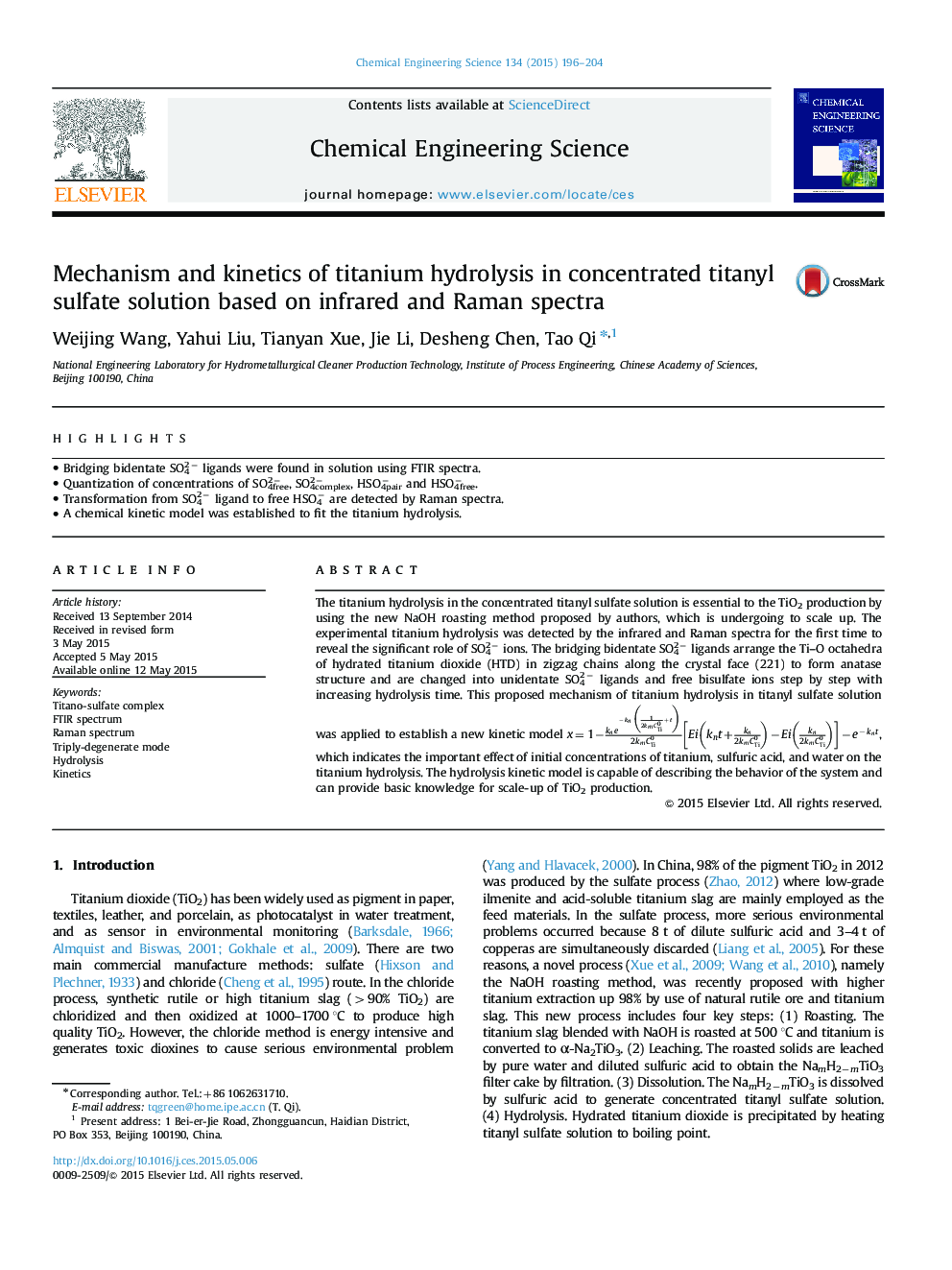| Article ID | Journal | Published Year | Pages | File Type |
|---|---|---|---|---|
| 6589667 | Chemical Engineering Science | 2015 | 9 Pages |
Abstract
The titanium hydrolysis in the concentrated titanyl sulfate solution is essential to the TiO2 production by using the new NaOH roasting method proposed by authors, which is undergoing to scale up. The experimental titanium hydrolysis was detected by the infrared and Raman spectra for the first time to reveal the significant role of SO42â ions. The bridging bidentate SO42â ligands arrange the Ti-O octahedra of hydrated titanium dioxide (HTD) in zigzag chains along the crystal face (221) to form anatase structure and are changed into unidentate SO42â ligands and free bisulfate ions step by step with increasing hydrolysis time. This proposed mechanism of titanium hydrolysis in titanyl sulfate solution was applied to establish a new kinetic model x=1âkneâkn(12kmCTi0+t)2kmCTi0[Ei(knt+kn2kmCTi0)âEi(kn2kmCTi0)]âeâknt, which indicates the important effect of initial concentrations of titanium, sulfuric acid, and water on the titanium hydrolysis. The hydrolysis kinetic model is capable of describing the behavior of the system and can provide basic knowledge for scale-up of TiO2 production.
Related Topics
Physical Sciences and Engineering
Chemical Engineering
Chemical Engineering (General)
Authors
Weijing Wang, Yahui Liu, Tianyan Xue, Jie Li, Desheng Chen, Tao Qi,
